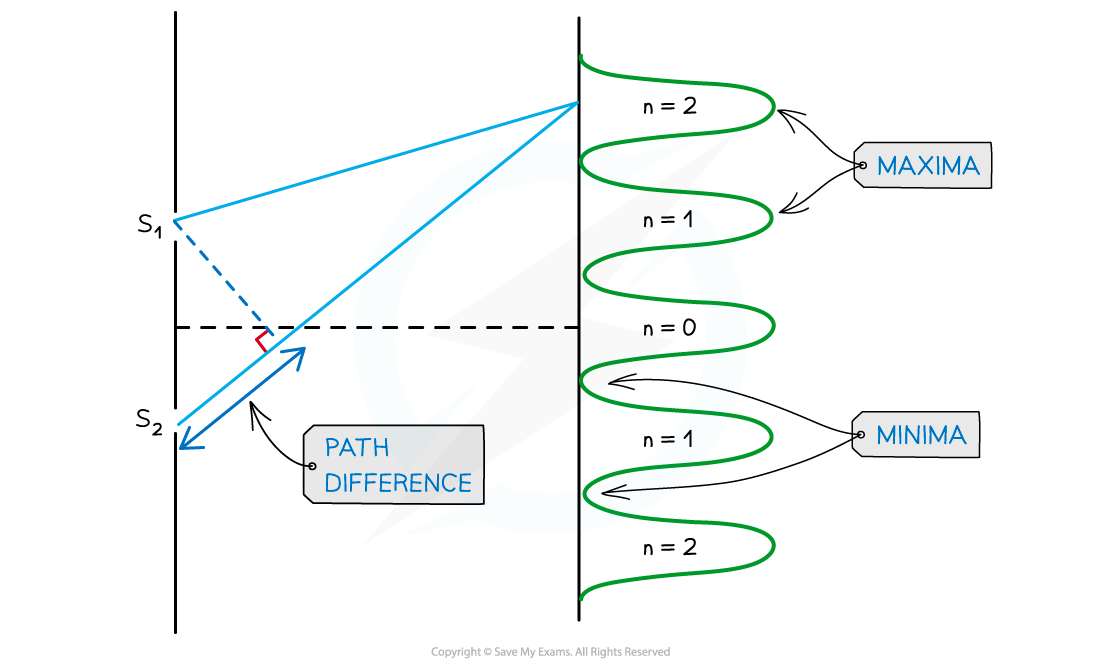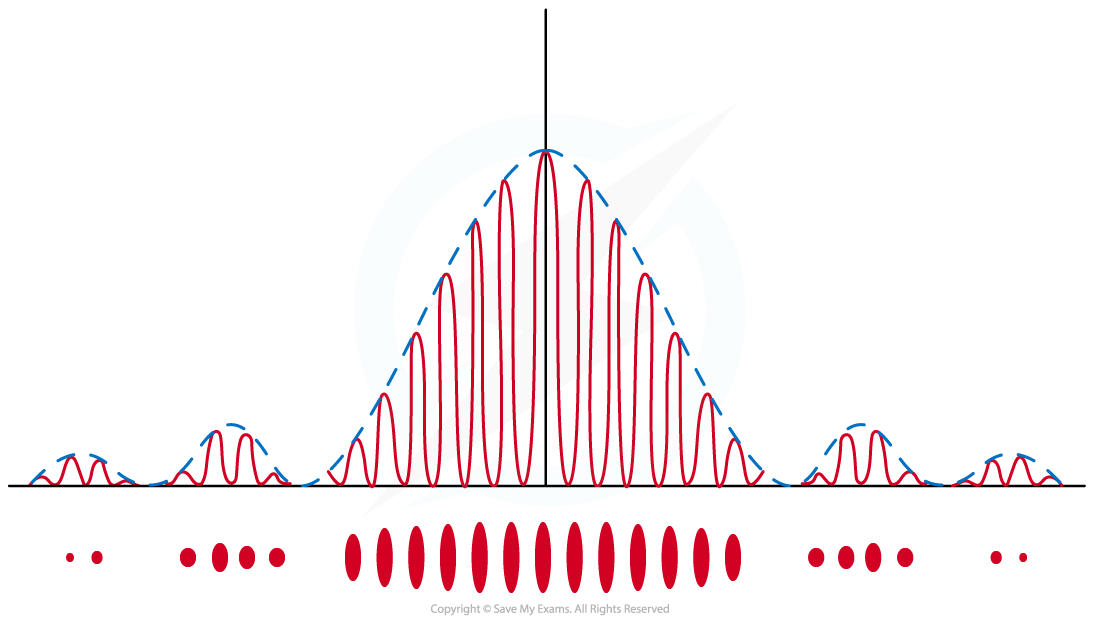Two-Slit Interference Patterns
- For two-source interference fringes to be observed, the sources of the wave must be:
- Coherent (constant phase difference)
- Monochromatic (single wavelength)
- When two waves interfere, the resultant wave depends on the phase difference between the two waves
- This is proportional to the phase difference between the waves which can be written in terms of the wavelength λ of the wave
- As seen from the diagram, the wave from slit S2 has to travel slightly further than that from S1 to reach the same point on the screen
- The difference in this distance is the path difference

Interference is caused by the variation in path length between the two slits
- For constructive interference (where there are bright fringes or maxima), the difference in wavelengths will be an integer number of whole wavelengths
- The condition for constructive interference can be written as:
path difference = (where n = 0, 1, 2, 3 ...)
- When waves undergo constructive interference their amplitudes add to form a bigger resultant combined wave at the point where they meet
- For destructive interference (where there are dark fringes or minima) it will be an integer number of whole wavelengths plus a half wavelength
- The condition for destructive interference can be written as:
path difference = (where n = 0, 1, 2, 3 ...)
- n is the order of the maxima (bright fringes) / minima (dark fringes)
- n = 0 is taken from the middle, n = 1 is the next peak and so on
- When waves undergo destructive interference their amplitudes add to form a smaller resultant combined wave at the point where they meet

Interference pattern of light waves shown with orders of maxima and minima
- An interference pattern shows the intensity of light at different distances away from the central maxima
- For a double-slit interference pattern the intensity of the light is the same for all maxima
- This is different to the double-slit diffraction pattern that is observed on a screen (These are explained in 9.3.3 Diffraction Grating Patterns)
Double-Slit Diffraction Geometry
- The diffraction pattern made by waves passing through two slits of separation d can be observed on a screen placed a large distance, D, away

- If the distance, D, between the slits and the screen, is considerably larger than the slit separation,
:
- This means the light rays coming from the slits can be considered as a set of plane wavefronts that are parallel to each other

- For two paths, r1 and r2, travelling parallel to each other at an angle, θ, between the normal and the slit, the path difference will be:
path difference = r2 − r1 =
- For constructive interference:
path difference =
- Therefore, bright fringes will occur when:
- For destructive interference:
path difference =
- Therefore, dark fringes will occur when:

- The distance between fringes, s, can be related to the distance to the screen, D, using trigonometry:
- Since the angle θ is small, the small-angle approximation may be used:
- Using the condition for constructive interference and the small-angle approximation:
- Rearrange the equation for θ:
- Combining the two equations gives:
- Rearranging for s gives an equation for the distance between two maxima:
Examiner Tip
The equations for constructive and destructive interference above are the same versions as found in your data booklet - don't let other versions of these equations confuse you!
Constructive and destructive interference can be calculated with alternative equations for specific values of n



